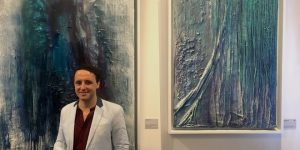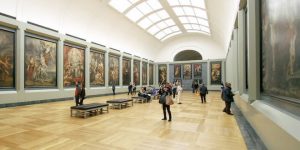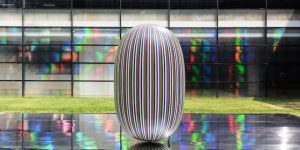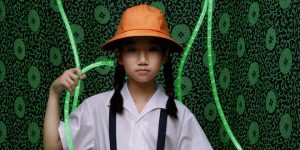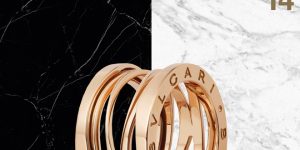Contemporary artist from Melbourne, Australia: Art Republik interviews artist Eddie Botha
Born in South Africa, the artist who creates works on interactions among people, nature and technology, speaks of his off-beat style and cultural influences.

Melburnian artist Eddie Botha.
Eddie Botha is a contemporary artist from Melbourne, Australia, who recently participated in Affordable Art Fair (AAF) Singapore’s 2016 autumn edition, and collaborated with Art Republik as the featured artist for our fair booth. Eddie’s work is both personal and indifferent, sentimental and light, as he examines human interactions deeply. Born in South Africa, Eddie is a well-travelled multiculturalist, dreamer, comedian, nature lover and activist whose search for cultural identity and sincere relationships is expressed through his highly detailed drawings and paintings of people and society. Using pen, paint, newspaper and collage, Botha depicts intricate, intimate scenes of conversations about human nature, people, technology, media, politics and sexuality, which unfold using a complex language of colour, symbolism and metaphor.
Art Republik speaks to Eddie Botha to find out more.
At the Art Republik booth on the AAF fairgrounds, your work invited people to touch, literally, with buttons that emitted light and sounds. Why the interactive element?
My works are about interaction. I believe life is about interaction, between people, nature and technology. It appears that our modern lives revolve around these three elements. Further, I want to break down the barrier between people and my artworks. There has been a development where art has become an elitist thing, and for the average person, it’s something foreign and expensive. As we all know, in galleries we are strongly deterred from touching art, and I want to change that, break that physical separation and allow engagement with the artwork. By engaging more senses such as hearing, touch and visual stimulation, the experience becomes so much richer as the viewer determines and influences how the artwork responds to them. Lastly, the element of technology has been linked to fear of robots and artificial intelligence taking over the world. I like to put this ‘serious’ subject into a playful manner and make it friendly, a bit humorous and make people smile. Life doesn’t have to be all doom and gloom and it’s really up to us to determine what technology does for us.
Your work deals with contemporary culture, politics and the cultural landscape; is there a reason you are drawn to those subjects, and why in an off-beat, humorous manner?
I depict my surroundings, everyday life — that’s all I really know. I don’t watch television or read newspapers, so the ‘news’ I receive is quite filtered and perhaps limited. I do this deliberately to not be indoctrinated by the media but to remain, to some extent, objective. I remember in South Africa, growing up during the Apartheid regime and believing that it was right because the media manipulated our thinking. That has left a huge imprint on my way of absorbing information and made me very skeptical of any media – except for Art Republik of course! Humour is important to me to break the seriousness of life. People need to smile and have some fun. I once read that the definition of humour is when you take a serious subject and exaggerate it or put it across in an absurd manner. So I use this theory in my art, taking a serious issue that I feel needs to be voiced out, and exaggerate it, making it funny, but still make people aware of the issue. I’m not necessarily trying to solve any issues, but rather to make people aware of things we get very accustomed to that we really shouldn’t, like violence, racism, sexism and so forth.
We spoke with you at the AAF fairground, just off the US electing Donald Trump into office; you mentioned you had to respond to that, all of which came out in your work. How do you view your work/yourself politically? Do you, much like Keith Haring, wear your affiliations on your sleeve?
I guess I say things as they are. That’s just my character. As an Australian, I am fortunate that we have the freedom to say what we believe. I really do not like politics at all and I think we all know that the current political situation is nothing short of absurd. A good person won’t make it in politics, simply because they will be ousted by evil. I was upset about someone who behaves as badly as Donald Trump and deems it acceptable to the extent of giving him such a big platform to speak his nonsense from. I simply try to slow down the damage he is doing, and if many people do that, we might even change it for good. I should say that I’m referring to the whole system here as well, not just him. My work does deal with politics, but it also deals with many other aspects, many of them positive and uplifting.

‘Donald Moods’ (detailed view), 2016, Eddie Botha.
Your work seems to have a lot of people observation, all around. Is that something you enjoy, and inspirational to you — seeing the world move, and people getting along with their lives?
Yes, life revolves around people. The dynamics of daily life intrigues me. That fleeting glimpse of a stranger walking past you in the street. That unexpected smile or kind gesture. Even simply the fact that every day we see people whom we will never see again. Or the fact that you might be sitting next to your spouse in the bus and not know it yet. Life is full of surprises.
You were born in South Africa and now reside in Melbourne – how did that all come about?
I grew up in South Africa, as my forefathers came there in 1652, one of the earliest families. I loved Africa, and I still do. Even though I was gifted in art and proved very talented as a younger person, my dad did not want me to study art, so I became a landscape architect. I worked as that in South Africa for about four years and got robbed and found my life in danger numerous times. I decided to give other countries a consideration. A friend told me that she saw an advertisement in the newspaper for a landscape architect needed in Malaysia by a property developer. I applied and three months later, found myself in a very interesting and dynamic Kuala Lumpur where I could make important decisions easily. Everything was so new and interesting, so different. I fell in love and subsequently stayed there for almost seven years. I did well financially during this time and always kept drawing, although it was for the purpose of design or leisure. I got married to a lovely Malaysian-Chinese lady 10 years ago now, and we decided to move to Australia. At first, we lived in Newcastle for three years, but Melbourne proved to be a much more suitable place for us. We love Melbourne and have lived in Australia for about eight years already.
You have cited African, Asian (Malaysia’s energy especially) and Australian Aboriginal influences are things that you enjoy and have a big imprint on your work. And manga as well. What about these diverse cultures, do you find interesting?
We all have intrinsic values that we share. Where do we belong, how do we fit in, contribute to society? As I moved and relocated, I constantly had to ask myself these questions, analysing how society functions and how to assimilate. Yet, there is a fantasy world that we all have within us, a manga world. I contrast this with notions of ‘primitive’ art that roots from the spiritual, the everyday life – art done for no financial gain. I touch on topics like consumerism and marketing at this stage. I juxtapose a fantasy world with the real world where some elements of my work are deliberately ‘unreal’ whilst other elements seems fake, but could perhaps be more real than those that seems artificial. I resin-coat marketing ads, promising you a ‘dream lifestyle’ whilst drawing simple line drawings of someone talking on their mobile phone, or having a nap. There has been such a distortion of ‘real’ life now by the media that I like to point towards this. No doubt that spending time in Malaysia, London and any city centre, that element of interaction and multiculturalism became real for me. As a ‘separated’ white person, I perhaps always longed for that as I knew that was our mistake, and I want to fix it and avoid it from ever happening again.

‘New Men’ (detailed view), 2016, Eddie Botha.
What would you be if not an artist?
I really cannot imagine doing anything else even when I try to. I love music a lot, which is another art form anyway, so still being an artist. Whatever I might try to do, will be in the form of an artist just using other media. I’m keen to try some sculpture work next year if I have the time.
What’s next for you?
I have a solo show in New York in April, and also taking part in Art Expo in New York during that time. There are three exhibitions I have been offered here in Melbourne that I will show work for in 2017. I want to push my boundaries further and do more collaborative work in Melbourne and abroad. There is a lady in Dhaka that I got along with really well during the recent visit to the Asian Art Biennale, and we will do some artworks together. I want to re-engage with some Melbourne and Sydney galleries and hit up some curators to get some projects going. I tend to be unorganised and take things as they come. 2016 has been great year for me so I hope to keep the momentum up for 2017.
This article was first published in Art Republik.




